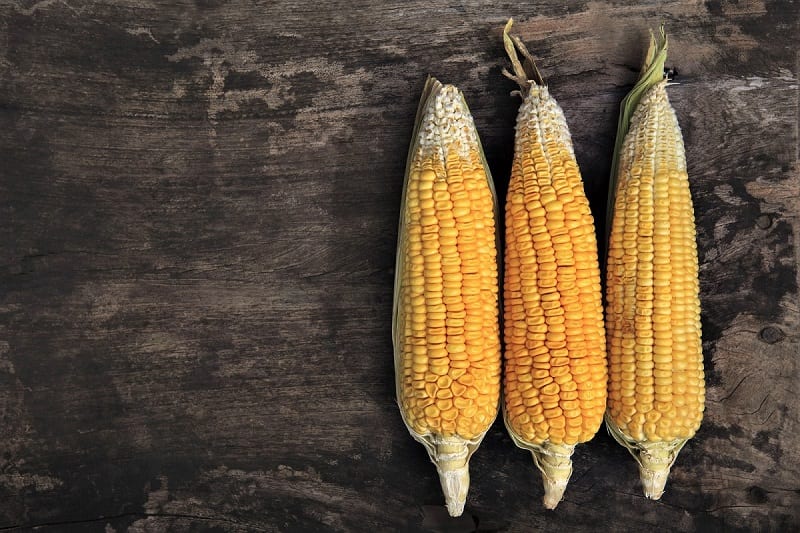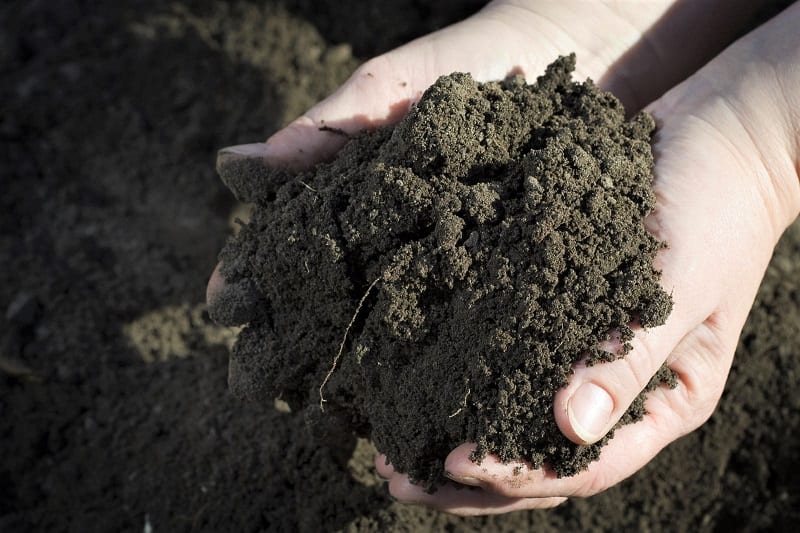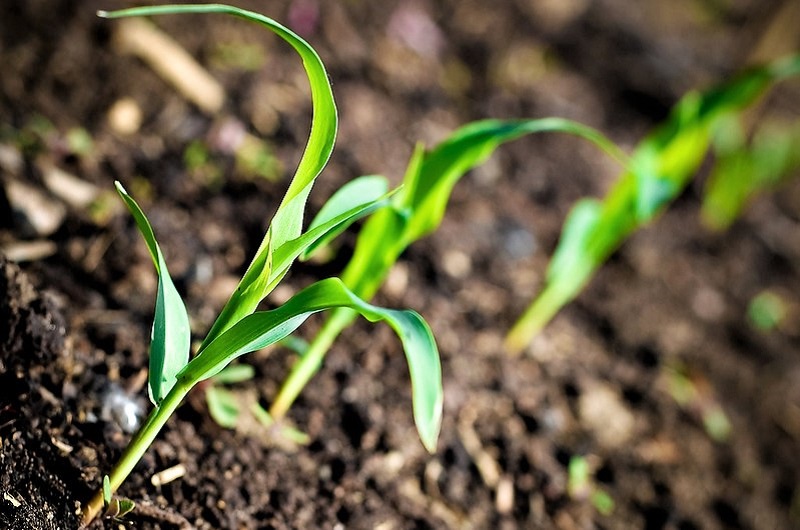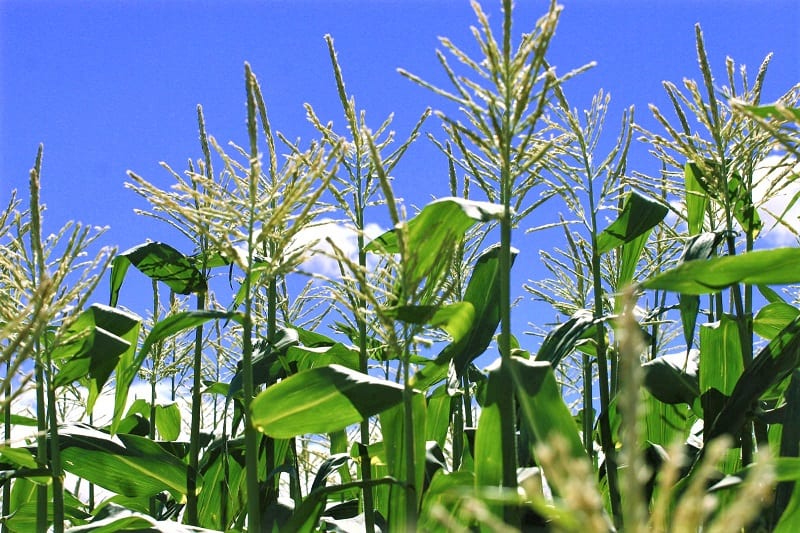Sweet corn is one of the most popular vegetables in supermarket produce bins. With a little space and planning, you can grow some in your own backyard. In fact, even though corn requires considerable garden space, many gardeners grow the crop because of the unrivaled sweetness of fresh, homegrown ears.
Establish a planting site in a sun-drenched, wind-protected area in your backyard and you, too, can grow corn.

Growing Corn in Your Backyard
Contents
If you have never planted corn, the first thing you should know is that corn does not thrive in cold weather. Make sure you wait two weeks after the last spring frost before setting out to sow corn seeds.
Soil temperature needs to be above 16°C for successful germination. If you are planting a super sweet variety, wait until the soil is around 18°C.
Corn is a voracious feeder. The plant is always especially hungry for nitrogen. That’s why corn crops thrive in places previously planted to soil-enriching vegetables like beans, hairy vetch, or clover.
Corn does not transplant well, either. If you garden in a region with a short growing season, start your corn crop indoors using biodegradable pots. That will allow you to avoid disturbing the roots at transplanting time.
Here’s how to grow corn in your backyard.
Preparing the Site
Much of the success of your corn crop will depend on the condition of your soil. The best way to prepare the soil for a corn crop is to plant a legume as a cover crop in the fall. Otherwise, you can amend your soil with about 3 to 4 inches of compost. Depending on the results of your soil test, you can also add a high-nitrogen fertilizer to your planting bed.
To promote pollination, plant corn in blocks rather than long, individual rows. Each block should be at least three rows deep. The rows in each block should be spaced 30 to 26 inches apart.

Planting Corn
When planting in early spring, sow the seeds in inch-deep holes the soil. In midsummer, plant them 2 inches deep. Plant three seeds together every 7 to 15 inches. The seeds should germinate within 7 to 10 days, at which time you should thin your crop to one plant every 15 inches. Remove unwanted seedlings by cutting them off at soil level.
If you are planting corn for fresh eating, grow a minimum of 10 to 15 plants for each member of the family. To extend your harvest, sow an early-maturing variety every 2 weeks over the course of 6 weeks. You might also consider planting early, mid-season, and late-season varieties at the same time. You can avoid cross-pollination by keeping different corn cultivars 400 or more yards apart.

(Photo: Ryad Hyde/Flickr)
Tending to Your Corn Patch
Corn cannot compete with weeds. This means you will need to weed aggressively throughout the first month of growth. You will begin to see the plants spread roots within two months of planting. Take great care not to disturb the delicate roots while disposing of weeds. Better yet, spread a layer of mulch over the area to prevent weeds from sprouting on your corn patch altogether.
Corn needs an inch of water a week, particularly when the stalks begin to tassel. Water the plants regularly. Corn plants that suffer water stress during pollination yield ears with missing kernels. Water at soil surface by using a soaker hose or drip irrigation.
Water your corn patch deeply during dry spells and after silks appear on the ears. You should avoid spraying water from above. Doing so could wash pollen off the flowering tops.

Fertilizers and Hand Pollination
Side-dress your corn patch with bone meal or fish-based fertilizer once the plants are 6 inches tall. Repeat the feeding when the stalks are knee-high. Do not remove any side shoots or suckers from your patch. They will not affect your harvest and cutting them might damage your crop’s root systems.
While the wind will pollinate the plants, a conscientious gardener will complement nature’s work by hand pollinating his corn crop. In the early morning, when there is no breeze, gently shake the pollen from the tassels onto the silks of the ears.

Corn Borers and Earworms
Corn earworms are a common problem among corn crops. You can use a mixture of vegetable oil, Bacillus thuringiensis, water, and a few drops of dishwashing liquid to manage earworm populations in your corn patch. Pour the mixture into a spray bottle and apply it onto the tip of each ear several days after the silks emerge.
You may have to deal with European corn borers, too. Corn borers feed on corn foliage, especially near the top of the stalk where the leaves emerge. They will eventually eat their way into developing corn ears.
When applied early, Bt and spinosad are effective against this pest. Corn borers overwinter as full-grown larvae in weed stems and old cornstalks. Pull up and destroy these winter refuges to break the corn borer’s life cycle.

Corn Smut and Good Gardening
Corn smut is a fungus that distorts corn kernels, turning them gray. The fungus makes pale, swollen galls that burst to release powdery black spores. Cut off and dispose of the galls before they open. If necessary, destroy the affected plants and dump them in the trash bin. Do not add the plants to your compost pile.
Good vegetable gardening practices are by far the best defense against pest and disease in the corn patch. Keep a clean garden, practice crop rotation, use water wisely and grow corn only when and where it is sure to thrive. You can also try growing corn varieties that are bred to resist pests and diseases.

Harvesting Corn
You can begin harvesting your corn crop when the tassels begin to turn brown and cobs start to swell. This usually happens three weeks after the corn silks appear. Pull back the husk and, with your thumbnail, pierce a kernel. If a milky liquid pops out, your corn is ready for harvesting. Pull the ears downward and twist to free it from the stalk.
Sweet corn varieties begin to lose their sweetness soon after harvesting, so eat any corn you harvest as soon as possible. Otherwise, store the corn in the refrigerator or freezer. Ears on the same stalk usually ripen a few days apart. Completely dry silk means the ear is past its prime.








